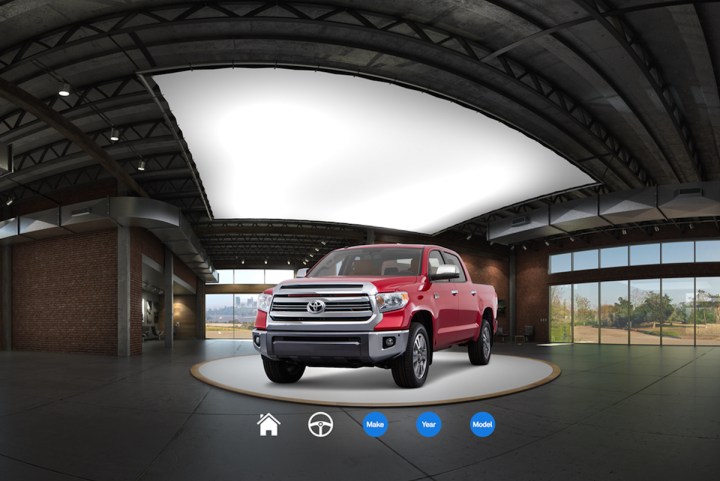
The free virtual reality app from EVOX Images offers users the chance to explore a library of new vehicles without ever leaving their home.
While this might sound like a niche use-case for VR gear, EVOX has announced that its app just hit one million downloads, making it the most popular automotive VR app on the Oculus Samsung Gear VR store and Google Play store for Android.
“Reaching this milestone is a celebratory event for us and also shows that VR is becoming an important component for the future of car shopping,” said David Falstrup, CEO of EVOX Images. “Consumer needs are driving technological advances in every aspect of our lives. We’re showing consumers a new way to research vehicles without ever leaving the comfort of their couch.”
Those who are familiar with virtual gaming understand the advantages of an immersive experience, and the same benefits are made available to car shoppers. Watching a YouTube walkaround is one thing, but being invited into the cockpit to analyze anything and everything, at your leisure, is uniquely convenient. This is made possible by EVOX’s 360-degree imaging tech — which it supplies to more than 20,000 dealer and automotive websites.
Every vehicle make and model that’s been on sale since 2015 is accessible through six different virtual showrooms — trucks, cars, SUVs, exotic cars, and everything in between.
Within the past year, the EVOX VR team has extended technology offerings with the introduction of showrooms, virtual cinema, vehicle configurator capability, VR product clinics, and more. These new virtual shopping features will benefit dealers by building customer engagement and driving store traffic.
RelayRides and other innovative uses for VR will undoubtedly make the technology appealing to a greater number of consumers. It’s only a matter of time before a VR headset is as common as a TV remote.


